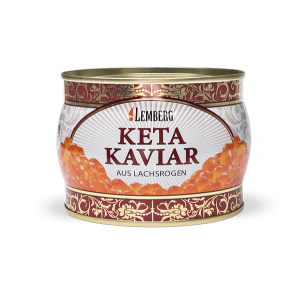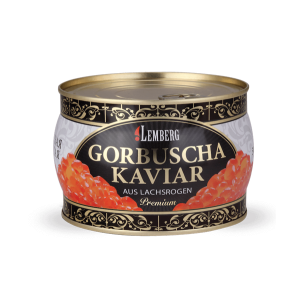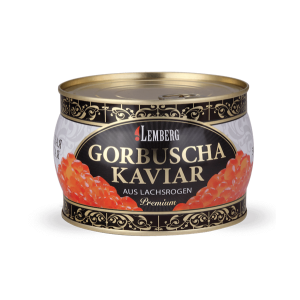WHAT DO YOU NEED TO KNOW ABOUT CAVIAR STORAGE?
- How long does caviar last?
- How can you prolong caviar shelf life?
- Identifying Spoiled Caviar
- Temperature
- FAQ
This detailed guide delves into the essential aspects of caviar storage, offering insights into maintaining temperature, understanding shelf life, and utilizing best practices to ensure your caviar remains fresh, flavorful, and delectable.
Manufacturers recommend consuming caviar within 2-3 days after opening the container.
The first thing you need to know about storing caviar is that it quickly spoils in tins. Some manufacturers package the product like that, treating them in a special way, but after opening the container, the remaining caviar must be transferred to a more suitable container. The most popular are glass and plastic dishes.
?
Caviar shelf life may vary depending on the brand and on the type of product.
- 2-3 days in a tin or open container;
- 1.5-2 weeks in plastic containers after pretreatment;
- 3-4 weeks in glassware after pretreatment;
- 6 months in the freezer in an unopened container at a temperature of 0 - +4 if this condition is maintained continuously;
- 9 months in unopened original packaging from the date of manufacture when stored under appropriate conditions.
Caviar's shelf life varies based on whether it's opened or sealed and its storage conditions. Here’s a comprehensive breakdown:
Storage Condition | Opened Caviar | Sealed Caviar |
Refrigerator (32°F/0°C) | 24 - 48 hours | 4 - 6 weeks |
Freezer (0°F/-18°C) | Not advised | Up to 1 year |
Room Temperature | Up to 24 hours | 24 - 36 hours |
How can you prolong caviar shelf life?
 If you need to keep the delicacy for a long time, then you should get a glass container with a hermetically sealed lid, since caviar in the refrigerator in plastic dishes is stored for only about two weeks.
If you need to keep the delicacy for a long time, then you should get a glass container with a hermetically sealed lid, since caviar in the refrigerator in plastic dishes is stored for only about two weeks.
But even if you didn't manage to purchase glassware, you can resort to one more trick - after filling the jar / box with the delicacy, you need to add 2-3 tablespoons of vegetable oil on top. It will displace oxygen between the eggs, and also cover them with a protective film, keeping them fresh for a long time. By the way, this method is an excellent solution in situations where the container was only half full.
Identifying Spoiled Caviar
The signs of spoiled caviar are distinct and should be taken seriously to avoid health risks. Key indicators include:
- Odor: Fresh caviar has a mild, briny scent. A strong, fishy odor indicates spoilage.
- Color and Appearance: Any significant changes in color or appearance can be a sign of deterioration.
- Texture: The eggs should be firm yet delicate. If they become mushy or overly hard, the caviar is likely spoiled.
When in doubt about the quality of caviar, it’s safer to err on the side of caution and discard it. Consuming spoiled caviar can lead to foodborne illnesses, which are particularly dangerous for certain populations, including pregnant women, the elderly, and those with compromised immune systems.
Temperature
The shelf life of caviar in the refrigerator directly depends on the selected temperature regime. Today, all households have already acquired two-chamber refrigerators, so it is not surprising that the question immediately arises, where to store the delicacy: in the main compartment or in the freezer? It is preferable to keep caviar in the refrigerator, that way it can be stored for no more than a week.
If it is impossible to create such conditions, then you can use the following tricks:
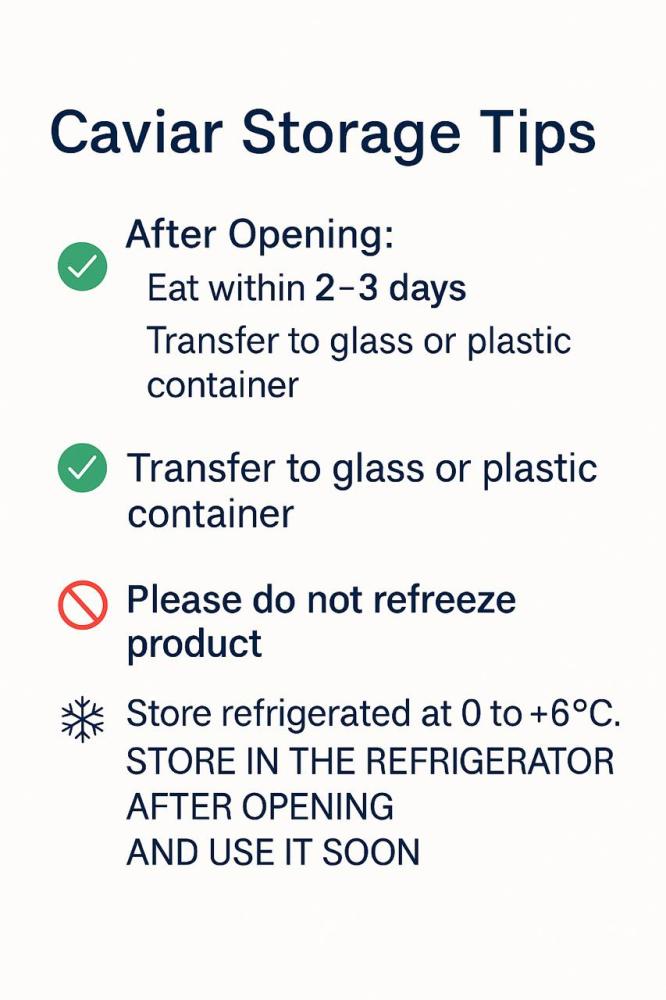 Place the glass or plastic dish containing the delicacy on the bottom shelf closest to the freezer. It should also be noted that the temperature at the back wall is 1-2 degrees lower than at the door, so the jar should be moved to the far corner.
Place the glass or plastic dish containing the delicacy on the bottom shelf closest to the freezer. It should also be noted that the temperature at the back wall is 1-2 degrees lower than at the door, so the jar should be moved to the far corner.- Another option is an ice pack. You need to take a cup in which a container with a delicacy is placed and chop ice into it. A jar of caviar is placed on the ice cushion, and ice is also poured along the walls. As a result, the storage temperature will be much lower than in the main compartment of the refrigerator.
The freshness of the caviar should be checked every two-three days. If a specific smell of herring has appeared, then it is not fit to be consumed, do not eat it in this case.
FAQ:
The ideal temperature for storing caviar is around 32°F (0°C). This temperature helps maintain its freshness and prevents the eggs from freezing or spoiling.
While freezing unopened caviar can extend its shelf life for up to a year, it's generally not recommended as it can affect the caviar's flavor and texture. Never freeze opened caviar, as it will lead to spoilage.
It's best to avoid metal containers for storing caviar, as they can react with the eggs and affect the flavor. Instead, use glass or plastic containers.
Serve caviar chilled, preferably on ice, to maintain its temperature. Pair it with neutral-tasting accompaniments like blinis or lightly toasted bread to let its unique flavor shine.
No, freezing caviar after it has been opened is not recommended. This can lead to spoilage and significantly deteriorate the quality and taste of the caviar.
Refreezing caviar is strongly advised against. Doing so can negatively impact its texture and flavor, and can also increase the risk of bacterial growth and foodborne illness.
Lat update: 08.12.2023
Our bestsellers
More Recipes & Tips
Indulge in the exquisite flavors of Ossetra caviar. With its medium-sized eggs, this delicacy offers a buttery taste and a subtle hint of nuttiness. Elevate your dining experience with this luxurious treat, perfect for special occasions.
While the original Persian word khavyar simply means "egg," not every egg can be described as caviar. Some producers tend to apply this prestigious label to any type of roe from capelin to salmon and everything in between.
Whether you want to enjoy the luxurious black caviar or prefer to opt for a less costly red variety, it is important to know how to serve caviar. Read on to learn what garnishes and drinks to offer to your party.
There are many different technologies for extracting caviar, depending on a variety of factors. And since a thorough discussion of this topic falls outside the scope of our article, we will only describe the most common method...
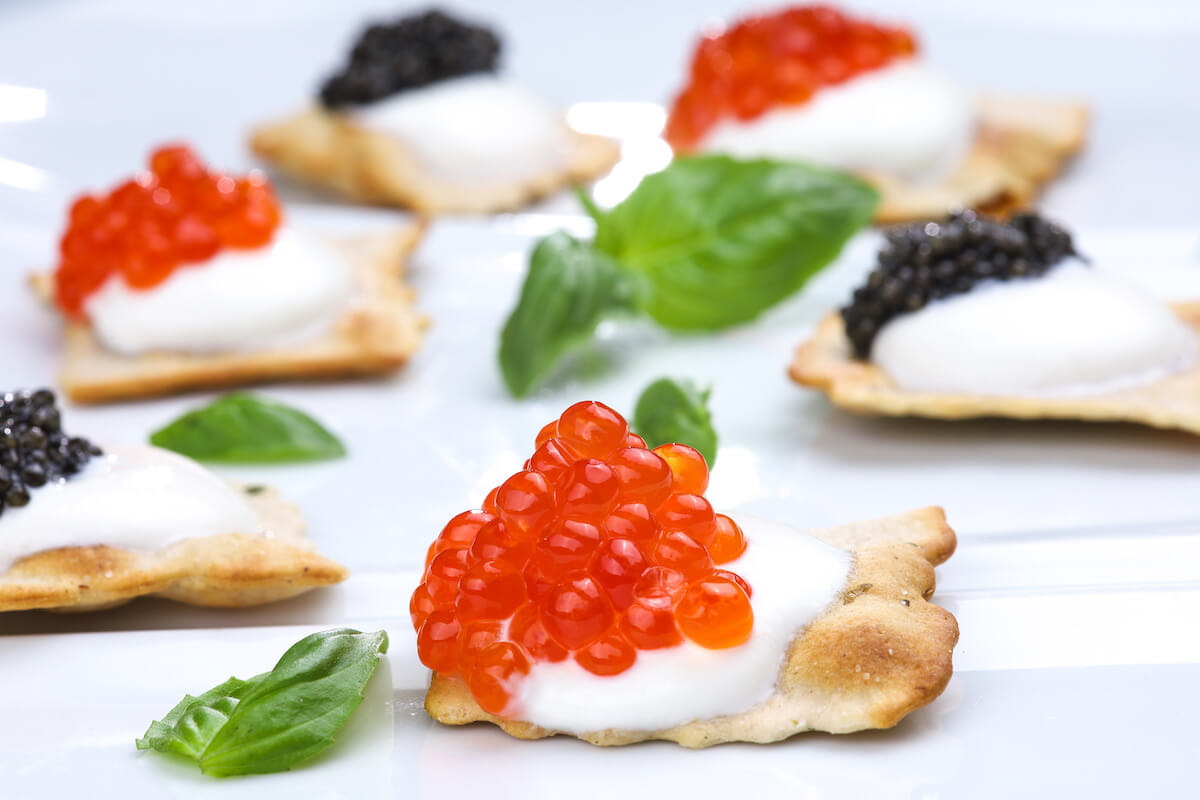
Indulge in the exquisite flavors of Ossetra caviar. With its medium-sized eggs, this delicacy offers a buttery taste and a subtle hint of nuttiness. Elevate your dining experience with this luxurious treat, perfect for special occasions.
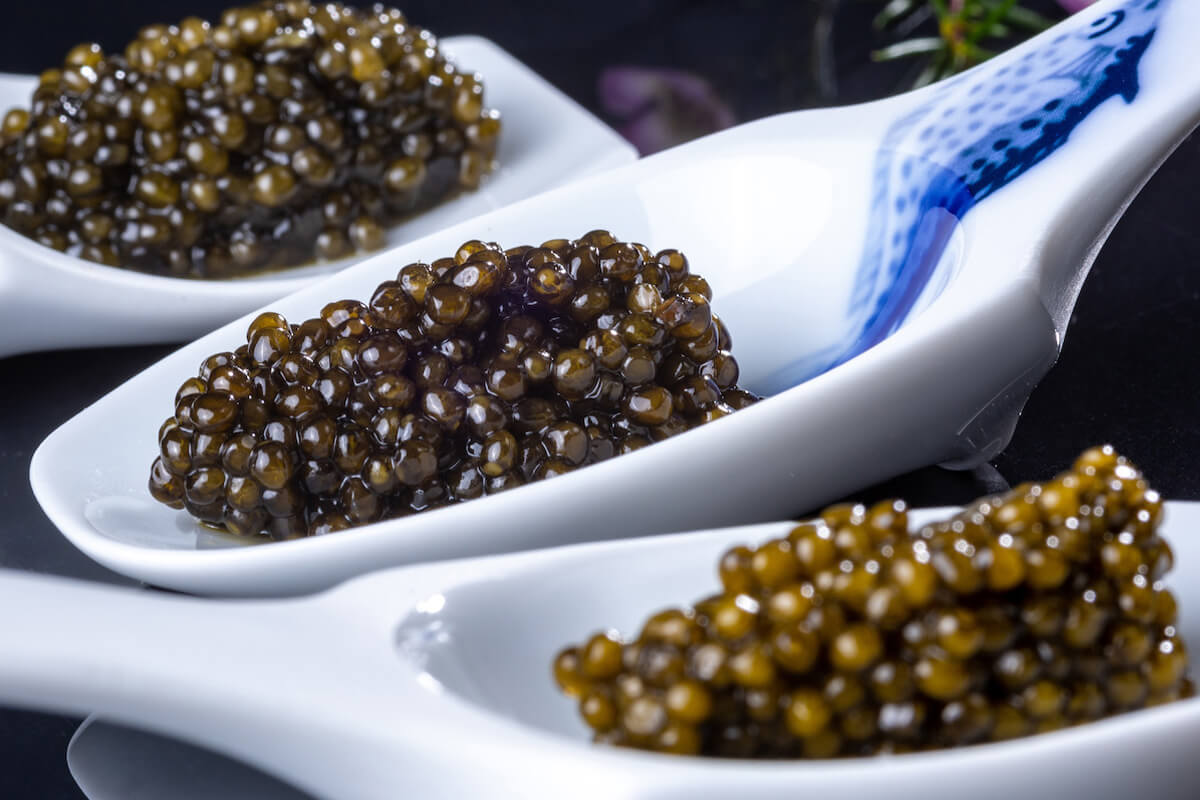
While the original Persian word khavyar simply means "egg," not every egg can be described as caviar. Some producers tend to apply this prestigious label to any type of roe from capelin to salmon and everything in between.
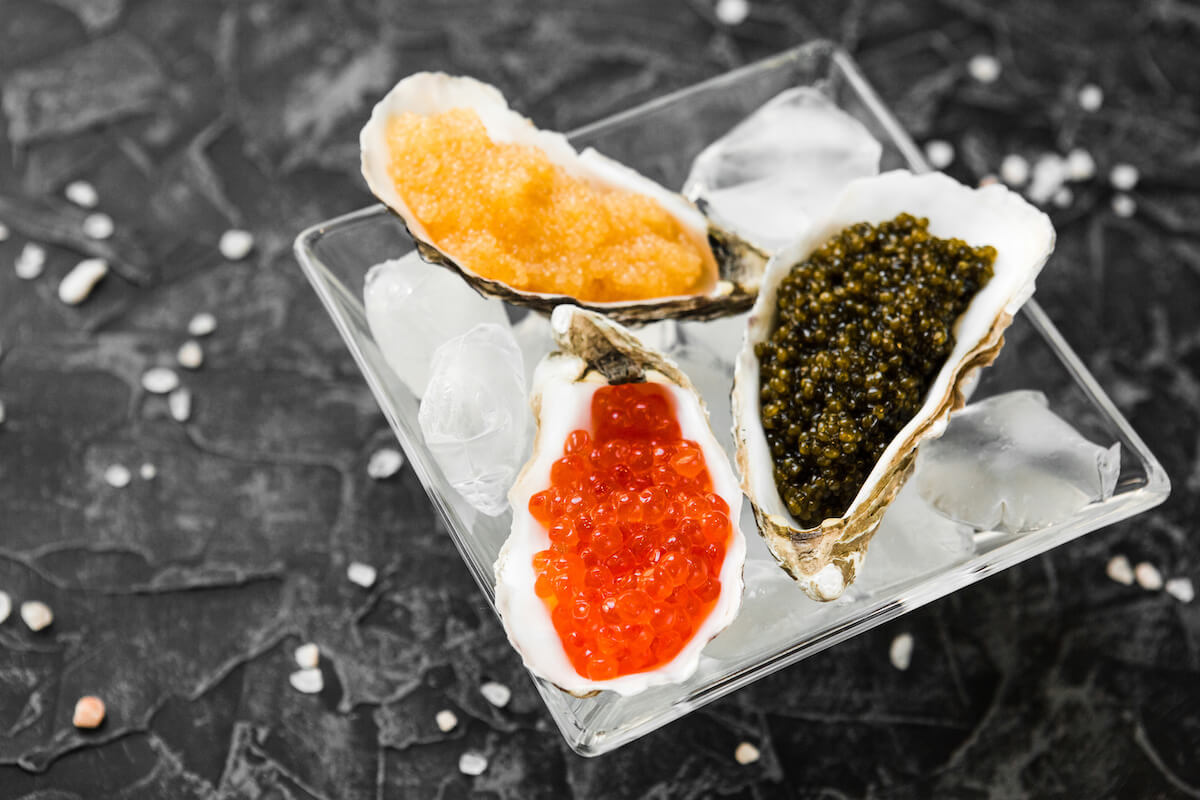
Whether you want to enjoy the luxurious black caviar or prefer to opt for a less costly red variety, it is important to know how to serve caviar. Read on to learn what garnishes and drinks to offer to your party.

There are many different technologies for extracting caviar, depending on a variety of factors. And since a thorough discussion of this topic falls outside the scope of our article, we will only describe the most common method...

 Русский
Русский
